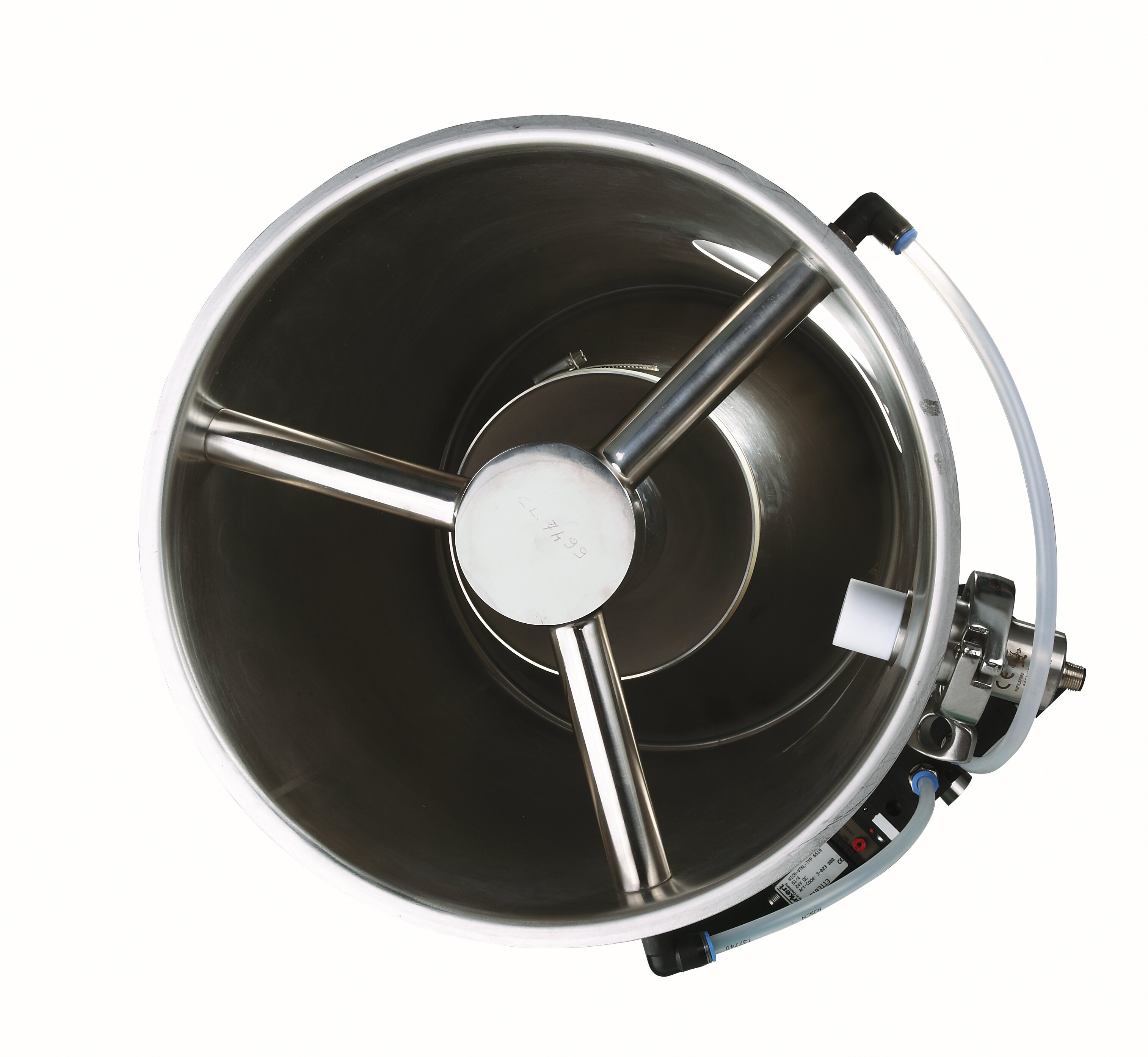
For reliable feeding of product without ingredient segregation to e.g. tablet presses, granulators or automated packaging lines in the pharmaceutical or other industries with similar high demands on hygiene and cleaning. The type PKS...MK receivers are used as individual receivers, with a separate blower each, in discontinuous vacuum, low-velocity vacuum and dense-phase vacuum conveying systems. They are mounted on the batch hoppers of the processing machines where they serve for separating the bulk materials. They are used for dust-like and powdery materials.
Hose filter with compressed air purging. Outlet with conical valve operated via compressed air, conveying connection with valve, clean air connection, electronic control in a separate box with plug connections. Clamping ring for mounting on customer’s machine hopper. All parts in contact with product of ground and polished stainless steel, no dead corners or edges. Can be dismantled for cleaning.
When switching the blower on, a vacuum is generated causing the product to be transferred via the conveying line from the pickup point to the receiver. When the conveying phase has ended, the outlet cone opens and the product is discharged. A new conveying cycle starts when the level control in the outlet requests more product. The filter is purged by automatic compressed air pulses after each conveying phase, and the air escapes via the vent filter. The sequence of the operating cycles is controlled by a freely programmable or an electronic control system. The actual operating state is displayed at the electronic control.